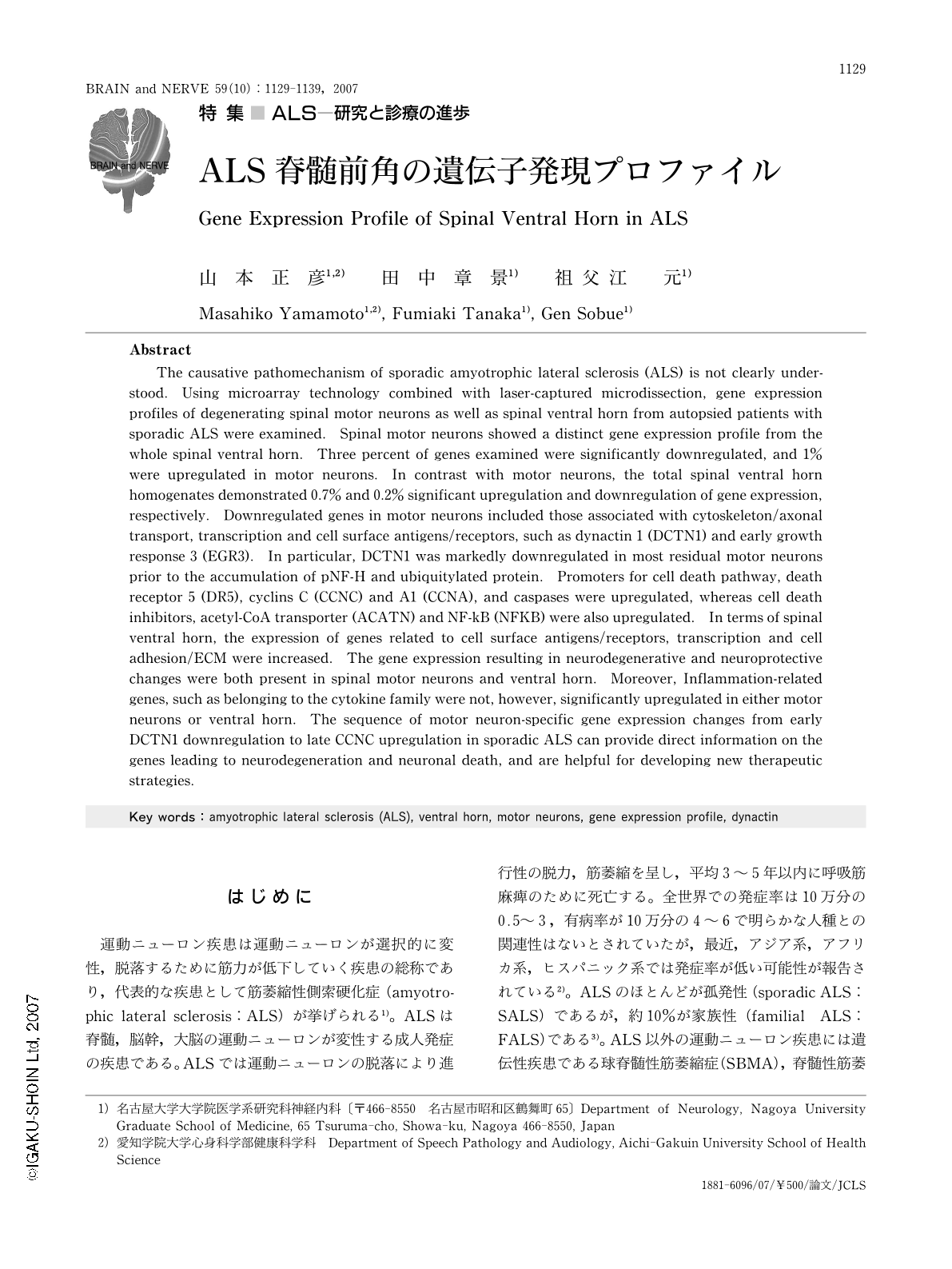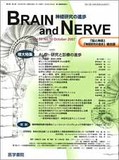Japanese
English
- 有料閲覧
- Abstract 文献概要
- 1ページ目 Look Inside
- 参考文献 Reference
はじめに
運動ニューロン疾患は運動ニューロンが選択的に変性,脱落するために筋力が低下していく疾患の総称であり,代表的な疾患として筋萎縮性側索硬化症(amyotrophic lateral sclerosis:ALS)が挙げられる1)。ALSは脊髄,脳幹,大脳の運動ニューロンが変性する成人発症の疾患である。ALSでは運動ニューロンの脱落により進行性の脱力,筋萎縮を呈し,平均3~5年以内に呼吸筋麻痺のために死亡する。全世界での発症率は10万分の0.5~3,有病率が10万分の4~6で明らかな人種との関連性はないとされていたが,最近,アジア系,アフリカ系,ヒスパニック系では発症率が低い可能性が報告されている2)。ALSのほとんどが孤発性(sporadic ALS:SALS)であるが,約10%が家族性(familial ALS:FALS)である3)。ALS以外の運動ニューロン疾患には遺伝性疾患である球脊髄性筋萎縮症(SBMA),脊髄性筋萎縮症(SMA)などがある4)。また,FALSの約20%はSOD1変異によって起こり,モデル動物における広範な研究によって,その分子病態が解析されている。特に,運動ニューロンとグリア細胞との相互連関が1つの焦点となっている。本稿では運動ニューロン疾患の大部分を占めるSALSの病態について,われわれの遺伝子発現プロファイリングのデータを中心に紹介する。
Abstract
The causative pathomechanism of sporadic amyotrophic lateral sclerosis (ALS) is not clearly understood. Using microarray technology combined with laser-captured microdissection, gene expression profiles of degenerating spinal motor neurons as well as spinal ventral horn from autopsied patients with sporadic ALS were examined. Spinal motor neurons showed a distinct gene expression profile from the whole spinal ventral horn. Three percent of genes examined were significantly downregulated, and 1% were upregulated in motor neurons. In contrast with motor neurons, the total spinal ventral horn homogenates demonstrated 0.7% and 0.2% significant upregulation and downregulation of gene expression, respectively. Downregulated genes in motor neurons included those associated with cytoskeleton/axonal transport, transcription and cell surface antigens/receptors, such as dynactin 1 (DCTN1) and early growth response 3 (EGR3). In particular, DCTN1 was markedly downregulated in most residual motor neurons prior to the accumulation of pNF-H and ubiquitylated protein. Promoters for cell death pathway, death receptor 5 (DR5), cyclins C (CCNC) and A1 (CCNA), and caspases were upregulated, whereas cell death inhibitors, acetyl-CoA transporter (ACATN) and NF-kB (NFKB) were also upregulated. In terms of spinal ventral horn, the expression of genes related to cell surface antigens/receptors, transcription and cell adhesion/ECM were increased. The gene expression resulting in neurodegenerative and neuroprotective changes were both present in spinal motor neurons and ventral horn. Moreover, Inflammation-related genes, such as belonging to the cytokine family were not, however, significantly upregulated in either motor neurons or ventral horn. The sequence of motor neuron-specific gene expression changes from early DCTN1 downregulation to late CCNC upregulation in sporadic ALS can provide direct information on the genes leading to neurodegeneration and neuronal death, and are helpful for developing new therapeutic strategies.

Copyright © 2007, Igaku-Shoin Ltd. All rights reserved.


